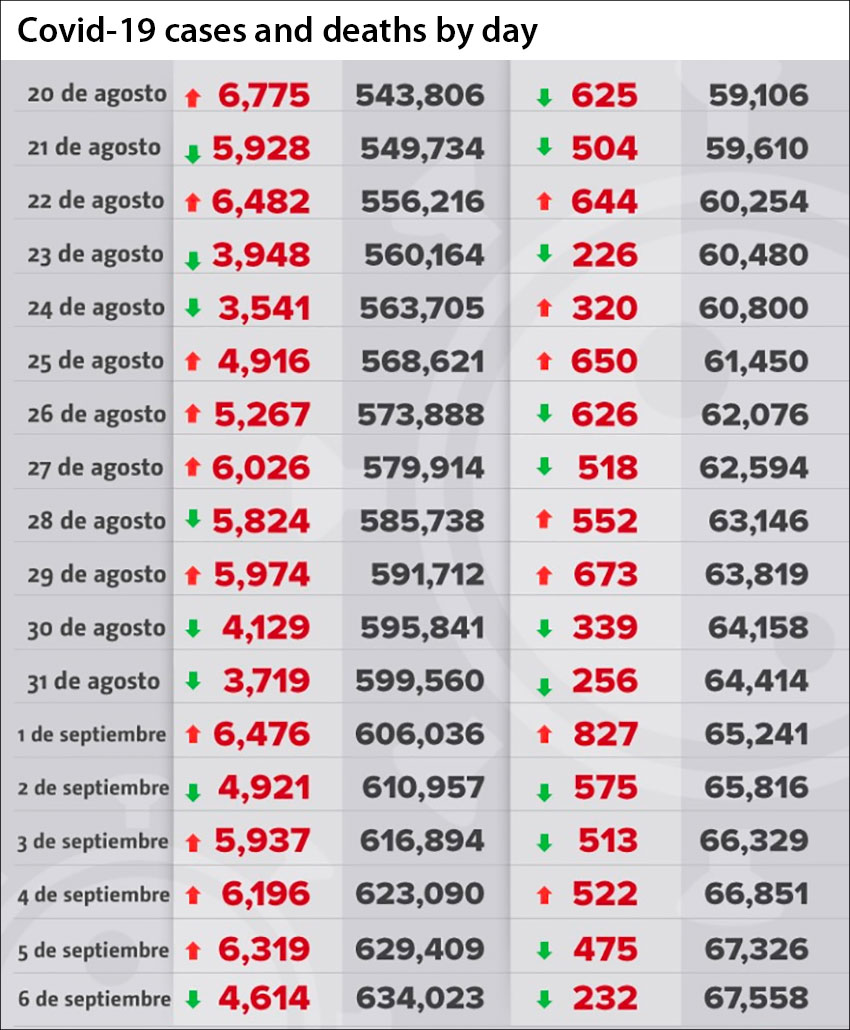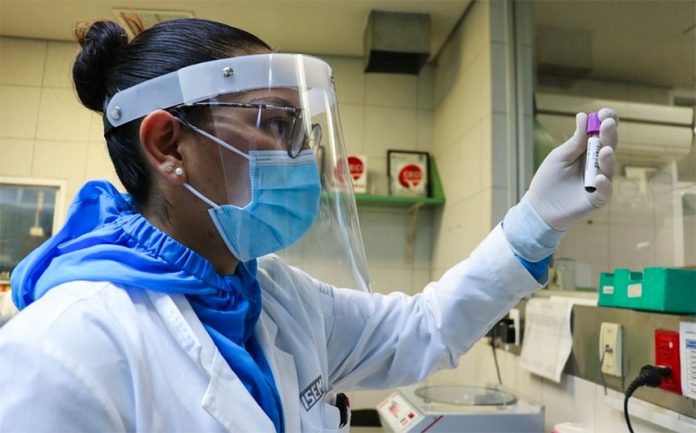New coronavirus case numbers declined or remained stable for six consecutive weeks between mid-July and late August, Deputy Health Minister Hugo López-Gatell said Sunday.
He told the Health Ministry’s coronavirus press briefing that new case numbers have generally trended downwards since epidemiological week 30, which ran from July 19 to 25.
Between weeks 33 – August 9 to 15 – and 34, “there wasn’t a reduction but at least there wasn’t an increase,” he said.
López-Gatell noted Friday that the reduction in new case numbers had stalled between weeks 33 and 34 and attributed the “disconcerting” leveling off to the further reopening of the economy.
The deputy minister told reporters Sunday that data currently shows that new case numbers declined 15% between weeks 34 and 35, which concluded on August 29.
However, a decline of that size is unlikely to be maintained because the Health Ministry is still registering coronavirus data for the latter week.
“This number won’t remain 15%, it might be 14, 13 or 12; we can’t predict by how much it will reduced,” López-Gatell said, adding that final data might show that case numbers actually plateaued between weeks 34 and 35.
“But it’s important to have the expectation that [new case numbers] won’t rise,” he said.
López-Gatell also said that the positivity rate – the percentage of Covid-19 tests that come back positive – declined continuously in recent weeks.
The positivity rate reached 57% in epidemiological week 29 – July 12 to 18 – but by week 35 it had declined to 40%, he said.
Mexico’s positivity rate is still very high compared to most other countries because testing is mainly targeted at people with serious coronavirus-like symptoms.

López-Gatell warned that coronavirus case numbers could spike in October at the same time that the seasonal flu begins to circulate. Influenza and the coronavirus could coexist until March or April next year, he said.
Meanwhile, Mexico’s confirmed case tally increased to 634,023 after 4,614 new cases registered by the Health Ministry on Sunday and 6,319 on Saturday. Active case numbers are estimated to number 41,796.
The official Covid-19 death toll rose to 67,558 with 232 additional fatalities on Sunday and 475 on Saturday. However, various independent studies have concluded that the real death toll from the infectious disease is much higher.
That conclusion was supported by excess mortality data presented by the Health Ministry on Saturday that showed that there were 122,765 more deaths between March 15 – the first Covid-19 death was reported on March 18 – and August 1 than in the same period last year.
The real number of “excess” deaths is almost certainly much higher because the data presented was collected from only 24 of Mexico’s 32 states. Deaths in Chiapas, Durango, Guerrero, Michoacán, Nayarit, Oaxaca, Tabasco and Yucatán were not included in the data.
Ruy López Riadura, director of the National Center for Disease Prevention and Control Programs, said there were 330,050 deaths in the 24 states between March 15 and August 1, 59% more than the 207,285 fatalities reported in the same states in the same period of last year.
He said that excess mortality was 70% for men and 47% for women, and that the 45-65 age bracket saw the biggest increase in deaths.
“Excess mortality has not been seen in those aged under 20. [Deaths in that age bracket] are below what was expected,” López added.
He said that the highest number of excess deaths corresponded to epidemiological week 29, which ran from July 12 to 18. The number of deaths recorded that week was 102% higher than last year, López said.
The health official said that not all the 122,765 excess deaths can be attributed to Covid-19, although it’s likely that the majority were caused by the disease.
The figure – derived from only three-quarters of Mexico’s states – is 159% higher than the number of Covid-19 fatalities reported by August 1, when the official Covid-19 death toll was 47,472.
Source: Reforma (sp), El Universal (sp)
